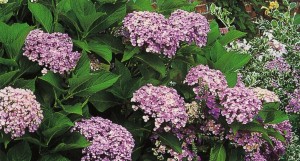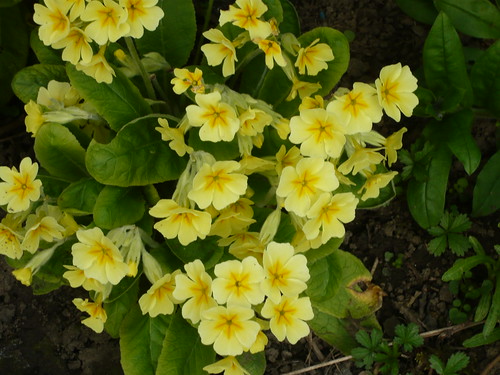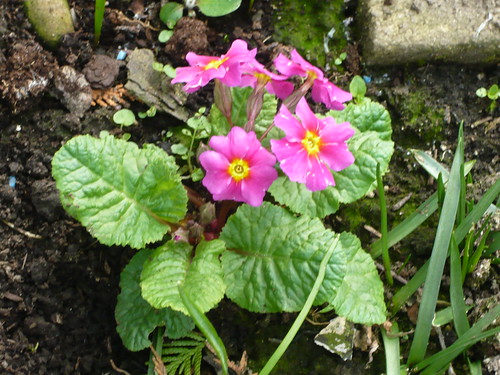Hardwood Cuttings Reminder
January is a good month to take hardwood cuttings including .
Buddleia – Currants
Dogwood – Forsythia
Gooseberry – Holly
Honeysuckle – Philadelphus
Rose – Viburnum
Willow
General gardening tips and hints
January is a good month to take hardwood cuttings including .
Buddleia – Currants
Dogwood – Forsythia
Gooseberry – Holly
Honeysuckle – Philadelphus
Rose – Viburnum
Willow
Hellebores are doing very well this year. The combination of the last cold winter, warm spring and now wet winter again has brought out the flowers in profusion. The Niger or Christmas rose is one of the earliest white flowers but many hybrids are now available.

Red, White and Blue the patriotic colours of the Hydrangea are augmented by pinks and purples like H. Ayeshia above as a variation on those themes. Flowering from mid-summer these shrubs give a magnificent display with very little effort. Did you see Hydrangea maritima on seaside holidays in large displays of sugary pink and sometimes blue.
Hydrangea macrophylla is the mop head type that can change flower colour from pink too blue depending on the soil. If the soil is acid then you will get a blue flower. The pink is produced on alkaline and more neutral soils. To change to blue add Aluminium sulphate or special colouring chemicals from garden centres to get a pink add lime. Some old methods include burrying a bag of nails or putting rusting iron near the plant. For best results when the soil id wrong for your desired colour plant it in a large pot with the right type of soil and keep it well wartered.
Hint and comments on Hydrangeas
Some old varieties to look out for
Climbers can look really great if you do some preparation. Select an appropriate wall to train your Climbers against or use a free standing structure like this metal frame for the blue Clematis.
My father grew exceptional roses before many of the varieties had been discovered or reached their current prominence. One thing he did to get special blooms was to restrict the number of flower buds by pinching out the runts.In many circumstances a good big one is more important the several also ran small ones.
Several plants flower too much for there own good at times. They produce buds, like the Peonie above, in greater profusion than you may want. To get a really good flower you want to channel the energy into a ‘king’ flower so you ‘pinch out’ any superfluous buds. It may seem cruel to be kind but I think of it as survival or the fittest.
Disbudding or thinning is easy, just nip out the extra buds before they develop too far. This technique can be used to get a great Rose flower for a show or on Carnations, Dahlias and Chrysanthemums. I have spoken previously about disbuding Apples and fruit trees.
Lots of materials are suitable for a compost heap. Pile in a mix of green and brown organic materials to help them heat up, when biological activity will then be at the highest.
Organic material includes plants and most items that have been growing. Avoid droppings from carnivores such as dogs but other manures are fine.
Type of Material
Ashes from untreated wood potash – use small amounts, it can make the pile too alkaline
Bird & Chicken droppings are high in nitrogen, beware seeds.
Cardboard and manila envelopes tear or shred and dampen
Bio-activator applied as a liquid or activator like Garrotta
Coffee grounds tea bags and filters
…

Grafting in the 19th century was a significant method of increasing stock of trees and plants as the photograph of East Anglian life by PH Emerson shows. The objects of Grafting are to bring a bush or tree into an earlier fruiting than it would do naturally; to produce good fruit from an inferior plant; or to save space by putting dwarf scions on to rampant growing trees.
The stock or subject is the base tree and the scion or graft is the portion of the branch to be imported.
The best time to graft is in March when the sap is rising.
Suppress all buds that develop on the old stem below the graft.
Use a paper bag to offer some protection once the graft is done
The graft should be inclined slightly inward so the inner bark of the graft makes good contact with the stock.
Grafted vines should be packed in damp moss.
Fruit tree or rose shoots should be firm and well ripened. Grafting material should be from the previous years growth and slightly less advanced than the stock.
Cleft, Wedge or Tongue-Grafting Cut off the top of the stock and cut out a thin wedge-shaped socket at the grafting point. Next cut the scion in a similar manner and wedge in and bind.
Double Grafting uses two scions but sacrifice the weaker one when they both take.

Spring will be sprung on you as soon as the snow and frost disappears. But first we need less rain. There isn’t much you can do at the moment but hope that any bulbs and hardy plants like these primroses are quietly getting ready to burst forth. If you are keen to begin then your first job should be planning and organising.
Begining to be Getting On

Herbs to make a bouquet garni can be grown at home and used later for cooking. All these herbs you can grow in the garden or on a suitable windowsill.
The ingredients for our basic Bouquet Garni are the herbs Parsley, Thyme, Bay and a clove of Garlic. Tie them together with undyed string. Then add other herbs that are specific to the dish you want to cook.
Use the herbs that are fresh and in season. If you have dried your own use sparingly to test the strength of flavour.
Herbs with high oil content can withstand longer cooking in stews and casseroles and include Rosemary, Oregano, Sage and Bay.
Loveage and parsley also retain flavour during lengthy cooking and combinations of stronger flavours are good for cooking meat dishes.
Poultry blends well with lemon flavour so lemon thyme, lemon grass leaves (harder to grow) and lemon balm will add the flavour you seek. You can also add a mixture of summer savoury, tarragon or hyssop.
Fish combines best with soft leaved herbs. Fennel, tarragon, dill and sweet marjoram are suitable as can be mint or welsh onion.